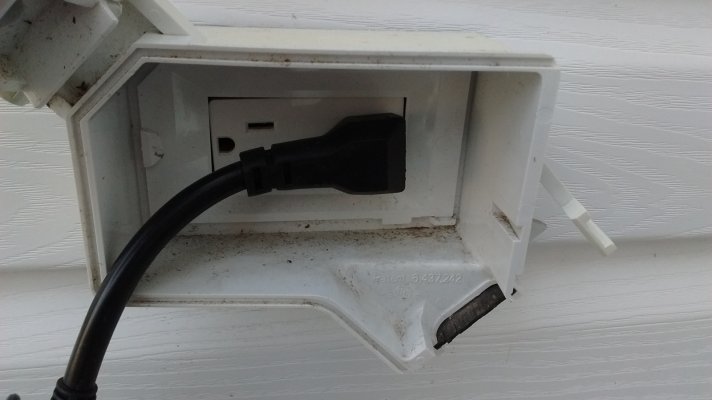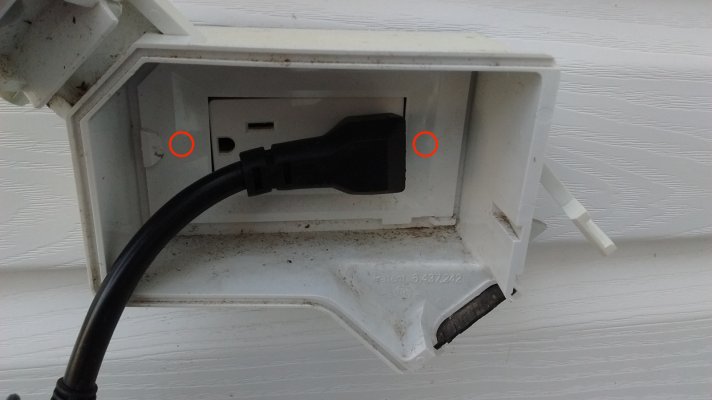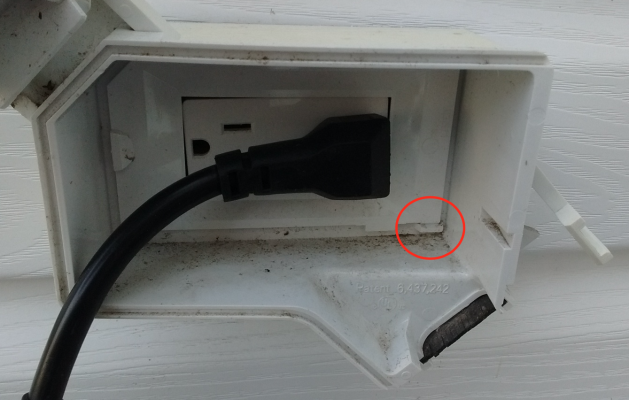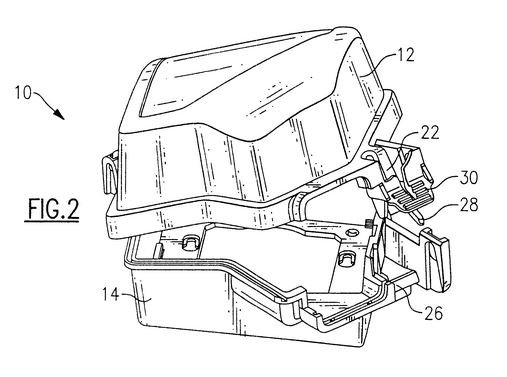The builder put two plastic covered electrical outlets boxes.
The problem is that all the outdoor extension cords I have cause the box cover to not latch in place which defeats the purpose of the plastic boxes.
What do I do?
The box I want to use is by the front door.
The problem is that all the outdoor extension cords I have cause the box cover to not latch in place which defeats the purpose of the plastic boxes.
What do I do?
The box I want to use is by the front door.




